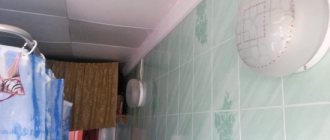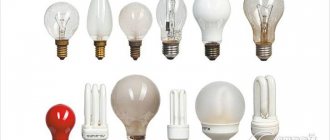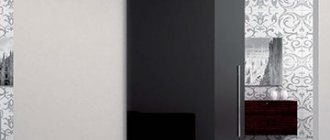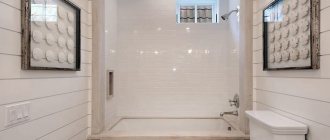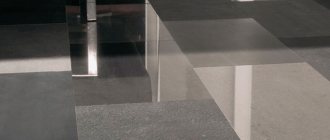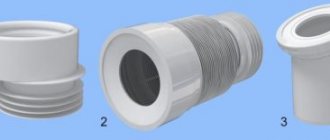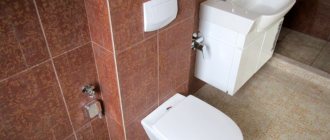- Types of plumbing fixtures with oblique outlets
- Where to start installation
- Installing a toilet - basic rules and recommendations
- What is the repair of toilets with an oblique outlet?
Modern manufacturers of plumbing fixtures never tire of surprising their consumers by producing more and more convenient and original new products. Once you have finally decided on the model you like, you will need to find out how to install it. In this article we will look at how to install a toilet with an oblique outlet, and also get acquainted with all their varieties.
Toilet features
A toilet with an oblique outlet is considered universal, since it can be connected to any socket coming from the sewer system. If we take a plumbing item with a direct outlet as an example, then the pipe for it must be located on the floor. When the socket is installed at an angle, it is quite difficult to install a toilet with a direct outlet. This will require modifications to move the sewer pipe forward. However, the finished result looks unaesthetic, and it is unacceptable to take up extra centimeters in a small room.
A toilet with an oblique outlet is in greatest demand for several reasons:
- Most modern houses are designed to install just this type of plumbing;
- The oblique outlet increases water resistance, which reduces the frequency of blockages.
- Cleaning the pipe is quite easy using chemicals. Due to the convenient location of the pipe, decomposed garbage will easily pass into the sewer.
- Installing a toilet with an oblique outlet is much easier than its closest brother. Even if there are slight deviations with the bell, it is not difficult to correct.
Features of installing a toilet with an oblique outlet
General rules for installing a toilet
To properly connect any toilet to the sewer system, you should follow a few simple recommendations:
- The diameter of the pipes from the toilet outlet to the waste outlet should not change either upward or downward.
- The jointly connected toilet and sewer outlets must be located at right angles to the vertical riser pipe or its horizontal section.
- All horizontal pipe sections must be laid with a slope. For pipelines measuring 110 mm, its standard value is 20 mm.
- When laying sewer pipelines, direct 90-degree turns should be avoided; they are usually implemented by sequentially joining two 45-degree shaped elements.
- Fastening of plastic polyvinyl chloride (PVC) pipelines to supporting surfaces is carried out in increments of no more than 10 values of their outer diameters.
- To clear the system from blockages, inspection hatches must be present or tees must be installed at a distance of no more than 10 m from each other.
Release forms
Types of toilets with oblique outlet
Before purchasing and installing a toilet, you should decide on its type. Based on the type of design, plumbing fixtures are divided into the following subtypes:
- Separated. This type is characterized by a separately installed tank. It can be mounted on a wall or even a ceiling, and is connected to the structure by a drain pipe. This toilet is not in demand because it does not efficiently use the space in the bathroom. So, you can build a small cabinet or shelves on the wall, but you have to install a tank.
- Compact. This type is the most popular due to saving space in the bathroom. The tank and bowl are connected into a single structure, which allows it not to take up extra space. Installing such a toilet is quite easy.
- Monoblock. This is a modern and quite expensive type of toilet, in which the tank and waste bowl form a single unit. It is compact, does not take up much space and looks very attractive.
- Angular. A corner toilet is installed in the corner of the room, which allows rational use of space. Not suitable for all apartments.
Features of a corner toilet with an oblique outlet
The remaining selection criteria are inherent for all types of toilets, regardless of the location of the socket. So, you will have to choose between earthenware, porcelain type with cascade or circular flush, with bottom or side water supply.
Exit along a vertical line to the floor
In apartments, an oblique or horizontal type outlet is common, since it is connected to installed sewer pipes. In private homes, a direct or, more correctly, vertical method of connecting to the pipes of the sewerage system is often chosen. If in apartments sewer pipes are mounted in the wall, then in private houses the owners prefer to lay them under the floor.
An analysis of the advantageous qualities of a toilet with a vertical connection and its negative aspects helps determine which is better in operation (sewage in the wall or under the floor):
- the design is silent in operation;
- since the level of liquid in the bowl is always high, it is always clean;
- easy care of the inner walls of the bowl;
- siphon design allows for more efficient washing of the bowl;
- no splashing of water during flushing;
- the absence of attachment to the wall allows you to install the toilet in the desired place in the room. Due to this, its space is also saved;
- The connection looks neat, because the pipes are hidden in the floor.
There is nothing to say about any particular shortcomings. Naturally, it is not possible to install a suspended structure this way. Attached or floor-mounted structures are installed.
Toilet installation
Installing a toilet with an oblique outlet during the process of renovating an apartment with your own hands will require a little patience and effort from you. It is necessary to follow several rules and recommendations, which will allow installation to be done quickly and competently. You can't make mistakes! If installed incorrectly, the operation of the plumbing will be disrupted, which will bring additional difficulties. For example, the most common mistake is the formation of gaps between the sewer socket and the drain pipe. All work is carried out in several stages, the first of which is the preparation of tools.
Installation diagram of a toilet with an oblique outlet
Classification of toilet models depending on the type of flush
Many customers are sometimes dissatisfied with the available selection in stores. It is quite difficult for them to make a choice from the widest range, as a result of which many get lost. However, there is a sure way to avoid this problem and make the most rational choice. Even before going to the store to buy this equipment, it makes sense to see exactly how the waste pipe is located.
Based on the features of its location, equipment intended for the toilet may have several release options:
- Directed at right angles - that is, vertical.
- Oblique.
- Horizontal.
It makes sense to focus on the design features listed above in more detail, because it is the drainage characteristics that are one of the most significant points when choosing a suitable toilet and its further installation.
It is possible that some buyers simply do not know what an issue is, and the need for such a choice simply confuses them. The outlet (sometimes plumbers say “drain”) is the hole through which the sewer is connected to the toilet. It can be located in only three directions. Its choice must necessarily correspond to the structural features of the waste pipe.
For devices with a horizontal drain, the hole is at the same level as the waste pipe. This mechanism is often found in imported models.
The vertical outlet is immediately directed to the floor - this type is preferable in private homes.
In city apartments, you are more likely to see an oblique descent, when the pipe reaches the floor at an acute angle of 45 degrees.
In order to decide what kind of flush a toilet should have that suits you, it makes sense to find out the pros and cons of each type.
Horizontal release
This type is becoming more and more popular every day. Such a descent occurs in modern new buildings - even the entire sewer system is “tailored” specifically for it.
For equipment characterized by a horizontal descent, the pipe at the rear ends parallel to the floor. To install a product of this type, you need to move it as close as possible to the wall. If you do not do this, then the view, to put it mildly, will be completely unattractive. The sewer pipe is connected using a special cuff. The toilet is fixed to the floor, usually using dowels and bolts.
Among the most significant advantages of this model are:
- Easy to install.
- Noble appearance.
- Convenient location for repairs.
In addition to the advantages, there are also disadvantages. If the installation is not carried out according to the rules, then the connection of the waste pipe to the pipe will not last long. Designs with a horizontal descent can be very diverse, which is why their popularity has only been growing recently. In this category, customers are offered to purchase:
- Attached;
- Floor-standing;
- Hanging models.
Depending on the size of your toilet, you can choose the most suitable option. Please note - in this case, it makes sense to seek help from sales consultants, especially if you are not particularly knowledgeable about plumbing and have not performed this type of work before. It also happens that the purchased plumbing equipment does not correspond to the characteristics of the room where it is planned to be installed. Accordingly, there is a need to change the product.
Oblique release
Toilets with an oblique flush have been produced for quite a long time, since the times of the USSR. However, their design has still not lost its relevance, which is why they are still being produced. So, even if something happens to the toilet in your apartment, or for some other reason you decide to exchange it, you can easily choose a suitable option.
The outlet pipe coming from the toilet is at an angle to the floor. The most significant advantage of such products can rightly be considered their increased reliability and versatility. And, despite the fact that now in the vast majority of new buildings toilets with direct release are installed, replacing it with a slanting one will not be difficult.
You can, without a twinge of conscience, remove the old product and install the model you like in its place. In order to eliminate the discrepancy, you should purchase an adapter, through which you can easily connect the existing oblique projection with the utility pipe. You just need to make sure that all connections are completely sealed.
To ensure a reliable connection, you are strongly recommended to take special care in choosing the corrugation. If you purchase a low-quality part, you will soon have to face the problem of leakage - for the simple reason that the corrugation will simply begin to crack.
Toilets with vertical outlet
Products of this type are connected to a sewer pipe located in the floor. Models with vertical outlet can often be seen in secondary housing stock. In addition, they are preferred to be used in private households. This type of device has many advantages over other types. After studying them, you are unlikely to have a question as to which version is best to choose a toilet with.
So, let's figure out what the advantages of toilet models with vertical outlet are:
- An ideal option for country mansions and apartments in houses of the last (and even the year before last) century.
- Silent operation of structures of this type.
- Toilets of this type are characterized by a funnel-shaped bowl. This feature effectively prevents intense splashing of water and its splash at the moment of rinsing.
- External aesthetics. All pipes are in the floor and are not exposed.
- There is more free space left in the room and comfort is ensured.
- There is a wide choice of models, adjusted to the design of the restroom and your personal preferences.
- If desired, you can use decorative elements.
But even taking into account all the positive aspects listed above, it cannot be said that one issue is definitely better than the other. In each case there are some disadvantages and advantages that must be taken into account and compared with the available capabilities and requirements. And do not hesitate to consult with professionals - it is better to ask again several times than to redo it later.
Preparing to install a toilet
In most cases, a toilet is installed due to the replacement of old plumbing. Therefore, it is necessary to prepare the place, or rather, dismantle the bowl and tank. There are two options here:
- If the toilet was installed using conventional fasteners, simply remove them.
- If the toilet is filled with cement, you will have to work with a chisel and hammer. When dismantling, calculate the impact force. If you hit the earthenware too hard, it will simply crack, and the remaining drain liquid will flood the room.
After removing the fasteners or removing the cement, tilt the toilet bowl back. This will allow the remaining liquid to drain down the drain. Next, remove the corrugation or dismantle the pipes, depending on the method of attaching the plumbing.
We dismantle the old toilet
Often the toilet is installed on a wooden base. It must be completely removed. This is not difficult to do - most likely, it is destroyed mostly due to high humidity. Similar work is carried out with a metal substrate (a grinder is useful here).
Dismantling the old toilet is considered complete after there are no parts, plumbing parts or construction debris left on the floor. Next you will need to fill the base with cement and level it. You will install the new toilet on a flat, clean surface. This will extend the life of the plumbing fixtures and make the installation process easier. There is no need to lay the board down. A cement base into which the fasteners can easily fit will be sufficient.
Description of the "release"
The drain hole that connects to the sewer is the toilet outlet. Connection is carried out in three ways:
- A universal option for connecting to the drain system, when the drain hole and its pipe are in a horizontal plane, at the same level. Finnish sanitary ware and Swedish models are produced.
- The drain pipe of the structure is directed to the floor, where the sewerage distribution is hidden. Common in houses built in Soviet times (Stalinist).
- The drain hole of the model is connected to the water drainage pipe at a 45° angle - this is the direction of the outlet obliquely. Models are produced by manufacturers in the Russian Federation.
Which toilet outlet is suitable will be determined by the selected design of the sewerage layout. If its installation is entrusted to a specialist, then his recommendations will not hurt either.
Toilet mounting
Wait until the cement is completely dry and make holes for the fasteners. You will later insert dowels into them that will hold the plumbing fixtures. Do not make the holes too wide, as this will prevent the toilet from being installed correctly and will allow moisture to penetrate into the substrate.
Additionally, it is worth replacing the metal pipe through which water is supplied to the toilet. Install a flexible hose that will last much longer and will not leak water.
Criteria for choosing a toilet
There is a wide variety of plumbing fixtures on the market with any design outlets. But for the consumer, the main condition for purchase remains comfortable use of the product:
- high-quality flushing of the model bowl;
- in a sitting position there should be no tension in the body, comfort in sitting should be noted;
- unpleasant “odors” do not come from sewer pipes;
- The bowl is washed without splashing liquid;
- silent operation of the cistern;
- reducing clogging of the structure exit;
- the ability to freely begin repairs if necessary.
The listed factors for the comfort of using plumbing fixtures are not affected by the type of toilet outlet. Here the influence of the shape of the bowl and the flushing mechanism has a greater influence.
Rules for installing a toilet
As mentioned earlier, flush toilets are universal and suitable for all types of pipes. Installing plumbing is not difficult using a drain pipe or a plastic socket, but only if the sewer socket is on the same axis as the bowl outlet. If deviations are observed, then use eccentric cuffs.
installing a toilet with an oblique outlet
So, do-it-yourself installation is carried out in several stages:
- Take a thick layer of red lead (you can buy it at any hardware store) and coat the toilet outlet.
- Wrap a strand of resin over the lead. Leave about 1 centimeter of the process free. If this is not done, the resin will get inside the pipe and cause blockages.
- The selected connecting element is put on the outlet, covered with sealant and connected to the sewer pipe. Please note that the connecting material must get onto both elements, otherwise you will not achieve a seal.
- Wait 20 minutes for the sealant to set on the surfaces and dry.
- To complete the work, tighten the connecting fasteners at the base of the bowl, firmly connecting the toilet to the floor surface.
Release options
Structurally, all toilets differ from each other in how they connect to the sewer pipeline; for this purpose, their neck is installed in different directions relative to the bowl. Thanks to this, plumbing fixtures can always be rationally connected to the drain, regardless of its spatial location.
Vertical
Since in this type of design the outlet pipe is located at the base of the bowl, a sewer outlet placed in the floor is used to connect it. This type of connection was previously often used in Soviet Khrushchev buildings and is now popular in Western Europe and the USA. Since the waste pipe must be hidden in a relatively narrow floor slab, which is both the floor and ceiling of the lower apartment, such an inclusion is practically not used in modern multi-storey buildings.
The situation is different with private houses and dachas, where plumbing fixtures on the lower floors are much more often connected to a drain with an outlet in the floor. In apartment buildings, this connection scheme is sometimes used on the first floors, where the riser goes into the basement.
Main types and typical dimensional parameters of corrugations
Straight
Plumbing fixtures with horizontal outlets are used in restrooms where saving space is important. With this placement, the sewer outlet comes out horizontally from the wall, and the bowl outlet is connected to it using an elastic cuff.
In this case, the sewerage inlet is located at a certain height, and the toilet can be moved close to the wall, increasing the area of the room. This type of connection is used in modern models with plastic risers, in which the input tee can be easily raised to any distance from the floor, as well as in installation versions.
Oblique
A universal outlet with an angle to the horizontal plane of 140 - 145 degrees, widely used in both old and modern plumbing equipment. Convenient when connecting toilets to tees located at the screed level. The advantages of this connection option compared to the horizontal one are the absence of stagnation and non-criticality to the alignment of the connected pipes.
Installation tool
Tank installation
After installing the bowl, proceed to install the tank. If the structure is solid, monolithic, then it is enough to connect it to the water supply pipe. If you chose a “compact” toilet, then the tank is secured using screws, nuts and sealed fasteners, which are included in the kit. When installing the tank, follow several rules:
- The fasteners can only be tightened after the rubber ring has been correctly installed and the connection to the drain holes has been made.
- In the kit you will see a large rubber ring. It is designed to connect the tank and the drain hole. The ring protects the structure from water leakage.
- The screws are tightened until the tank stops wobbling. Then you can turn on the water and check for leaks. If liquid enters the tank and does not pour out of the cracks, then the installation was carried out correctly.
Types of connecting elements
If it is impossible to directly connect the toilet to the sewer due to the design features, auxiliary materials are used - connecting pipes. In most cases, the following types are used:
- corrugation;
- eccentric cuffs;
- corners and elbows made of plastic;
- pipes of various materials, but plastic is preferable.
Connecting the toilet to the sewer with corrugated pipes is used if the alignment of the pipes is not maintained. The advantage of this type is the ability to install the product at an arbitrary angle.
The disadvantages of using corrugations to connect the toilet to the sewer include the large minimum length. If the distance between the pipes is about 12 cm, it is better to opt for other connecting components.
Eccentric cuffs outwardly look like 2 bends with shifted centers. Before purchasing the part, it is recommended to measure the offset between the sewer line and the toilet flush.
This data will allow you to choose the most suitable cuff model in the store. The disadvantage of the eccentric part is its short length, which implies the possibility of installation only with a small distance between the nozzles (up to 12 cm).
Bends and corners are installed in cases where the corrugation cannot be used for some reason. Their advantage compared to corrugation is that the wall is smooth on the inside, which significantly reduces the risk of blockages.
The main disadvantage is rigidity, which leads to leakage even with a slight misalignment. Plastic products can be cut to fit, unlike cast iron.
In most cases, steel pipes are used when there is a risk of failure of the water seal mechanism (find out what a water seal for sewerage is, its operating principles, what types there are, etc.). If the throughput of the riser is insufficient, liquid from the siphon will be drawn into it.
As a result, the water seal does not work, and the stench from the sewer enters the room. In such a situation, a pipe product with an automatic valve is connected to the riser or pipe connected to the toilet. When draining, a special valve opens and air enters, which prevents the water seal from breaking.
However, to implement such a function it is not necessary to use steel pipes. There are also eccentrics and adapters that give the pipeline similar properties. To ensure reliable connection, it is recommended to use sealant when using any type of connecting elements.
For these purposes, it is advisable to purchase a special waterproof product intended for plumbing fixtures. By loosening the rubber sealing collar, the sealant will prevent leakage.
Corrugated connection
As a rule, installation of a toilet with direct and oblique outlet is carried out using corrugation. It has an affordable price, can be bent in any direction and used as a temporary connecting element. When purchasing, you should focus on the length from the sewer outlet to the toilet outlet; the corrugation should be a third larger than this value.
Brief algorithm of actions:
- Coat the joint with silicone and insert the corrugation with the seal into the hole in the pipeline. It is advisable not to move it until the silicone-based product has completely dried.
- Place the toilet and check its stability. If the product wobbles, it is necessary to level the floor or install special stands.
- Insert the corrugation into the toilet pipe; there is no need to lubricate the connection with anything.
- Pour in a few liters of liquid, wait 1 minute, then make sure there are no leaks. If the connection leaks, you need to disconnect the corrugation, check the correct location of the seals and carefully reinstall it.
- If there are no leaks, you can mark the mounting points of the plumbing fixture with a pencil or marker.
- Secure the product so that it does not swing.
- Connect to sewer.
- After 2 hours, carry out testing by performing several drains. Wait 5 minutes, if the pipe does not leak, you can begin installing the tank and other elements.
- Lubricate the joint with sealant from the outside to prevent future leaks.
If a small leak (a few drops) was detected during the last test, all liquid must be completely removed and the corrugation removed. Then apply silicone again to the elastic band of the product and install it on the toilet pipe.
Find out what you need to do if the toilet tank suddenly starts leaking: 9 reasons why it is leaking and video instructions for repair.
Installing a toilet without screws
Installing plumbing fixtures on fasteners is the most reliable and easiest way. However, you don’t always want to spoil the base if tiles are laid on it. What to do in this case? Do as you did before, using a cement backing:
- Mix the cement mortar and dump it on the floor where the toilet will be installed;
- Place the bowl on top, press it tightly to the cement;
- Remove excess solution with a rag.
The connection to the sewer pipe is carried out according to the scheme described earlier. After two days, the cement will completely harden, so you won’t be able to move the toilet even a couple of centimeters.
You can replace cement with liquid nails and cold welding. Working with these materials is a little easier, but their price is much higher.
we install the toilet without using screws.
The disadvantage of this method is the impossibility of accurately dismantling the toilet. If you need to replace tiles or repair pipes, you will have to remove the plumbing along with the base. Unfortunately, it will not be possible to reinstall the toilet.
Materials and tools
Before connecting the toilet to the sewer system in an apartment or private house, prepare the following tools and materials:
- Corrugations, cuffs, eccentrics, pipes, shaped parts through which the toilet outlet is connected to the sewer.
- Fasteners for screwing the base to the floor. Typically the set consists of a pair of dowels with hex screws included in the package.
- Flexible hose for supplying cold water to the tank.
- Adjustable or regular wrenches for fixing the liner and bowl to the screed.
- Tape measure and pencil for marking cut pipes and mounting holes on the flooring.
- A hacksaw or grinder with a disc for metal or concrete for cutting hard PVC pipes to size, sandpaper for removing burrs from their edges.
- A hammer drill with drills matching the size of the mounting dowels for ceramic tiles and concrete for drilling holes for attaching the bowl to the floor.
- The sealant that most plumbers use to seal flexible rubber pipes to prevent leakage is completely useless in this application. It may be needed to coat the bottom of the bowl in order to give it a stable position in case of an uneven floor. Also, under the bottom you can place scraps of the substrate for laminate, linoleum, rubber and other waterproof elastic materials cut along its perimeter.
Dimensional parameters of standard horizontal bends and their connection through cuffs
Options for solving possible problems
If the floors in the bathroom are uneven, then before installing the toilet, lay sealant, construction foam or, as mentioned above, cement as a base. Do not install plumbing fixtures on uneven surfaces.
The problem in which the outlet of the bowl does not coincide with the sewer pipe deserves special attention. For example, it may be located slightly higher or lower. This is, in fact, why eccentric cuffs exist. They allow you to eliminate errors in the axis and connect the toilet to the sewer system. They can also be used when installing a bowl with direct outlet, but only if the error in distance does not exceed 5 centimeters.
Connecting a toilet to a sewer with a floor outlet
The position of the structure in the floor is fixed with a special flange for connection.
Silicone sealant is used to seal seams.
The connection is carried out carefully and slowly in a strict sequence:
- The location of the model is chosen at the discretion of the owners, but ensuring that the sewer hole coincides with the toilet outlet.
- A felt-tip pen on the floor marks the place where the fasteners of the legs of the structure are fixed. This will prevent it from shifting during installation work.
- Bolts are inserted into the holes in the flange, which will fix the position of the model.
- A flange is installed in the sewer outlet. First, the place where it joins the pipe is coated with sealant to strengthen the fixation.
- The next step is very important. Particular care is taken to align the model's inlet with the flange connector built into the floor. To enhance the seal, use a rubber gasket or silicone sealant.
- The release position of the structure is secured to the flange with special fasteners.
- The position of the plumbing fixtures on the floor surface is fixed. To do this, its leg is strengthened with bolts.
- By draining water into the bowl, check that there are no leaks at the joints.
Trying to replace the flange with a rubber seal will result in the plumbing becoming unstable on the floor.
Anyone can carry out the connecting work independently.
Some tips
- When purchasing connecting elements, pay attention to their thickness. The larger it is, the less likely it is to damage the part during operation. Also, the thick walls of the corrugation extend its service life.
- Do not cover the sewer pipe with sealed elements. In case of blockage, the structure will have to be removed. Modern elements blend perfectly with the plumbing, so there's no need to do any extra work.
- If you install a toilet on a base with garbage, then such plumbing will not last long. After installation, you will notice unevenness, which looks unattractive. Be sure to remove all construction debris and vacuum the base to remove dust.
- If you decide to cement the toilet rather than secure it with additional elements, then be extremely careful. Do not put too much pressure on the bowl and, especially, do not make pushing movements. Quite fragile earthenware may not withstand this.
- According to the instructions given, you can install a toilet with an oblique outlet of any type, regardless of the material, type and size of the bowl.
You can install a toilet with an oblique outlet yourself, without the help of specialists. This way you will save money and make a personal contribution to the repair work. But if during the installation process you begin to realize that finishing the process is problematic, it is better to stop and ask for help from specialists.
Using an adapter for different types of connections
When choosing a toilet, the first thing to consider is the pipe outlet and the location of the sewer riser, while immediately choosing how to connect the plumbing. You can connect plumbing to the sewerage system using special adapters - pipes and drain pipes.
Pipes for connecting the toilet are inexpensive
However, this installation method completely depends on the type of toilet flush:
- For oblique outlets, two types of adapters are used: for installation in the floor and for installation in the wall at an angle of 40 degrees;
- For vertical descent, installation is carried out into the wall using a fan pipe with an angle of 90 degrees or into the floor with a direct adapter;
- For horizontal descent, use a straight adapter for mounting to a pipe in the wall and a 90-degree adapter for mounting to a pipe in the floor.
Adapters, unlike corrugated pipes, allow you to install the toilet at a minimum distance from the wall. They are made from different materials, which makes it possible to create the appearance of unity between the device itself and its connection system.
Proper connection of plumbing to the sewer system will ensure comfortable living in the house. And for this it is not necessary to invite specialists; you can connect the toilet yourself. The main thing is to follow certain rules for installing equipment and choosing consumables. There are several ways to carry out such work; the choice of the one suitable for each particular case depends on the type of sewer system and the plumbing used.
Toilet materials
Based on the material used, models are divided into:
Stainless steel
These models are highly durable and resistant to mechanical damage. This anti-vandal option is most often used in public bathrooms.
Porcelain
This is the optimal toilet material. It has fine porosity, which does not allow it to absorb much moisture. As a result, urinary stone accumulates on the toilet much more slowly, and the product itself retains its original appearance longer.
Faience
A more economical option compared to porcelain, but less practical. Earthenware has a more porous structure and greater water absorption.
Plastic
Only bio- and portable toilets are made from plastic.
It is worth noting that ceramics is a general name for plumbing material. Ceramic toilets are divided into porcelain and earthenware.
Types of toilets, their classification and description
A key attribute of comfortable living in an apartment is the presence of working plumbing fixtures. When choosing a toilet, it is important to understand its characteristics and operating principle. First of all, it is worth determining what types of such equipment there are and how they differ.
By connection method
Depending on the method of connection to the sewer system, there are 3 types of toilets:
- Horizontal release.
- Oblique.
- Vertical.
The listed types do not differ in any advantages over each other, because they are selected according to the location and direction of the sewer pipe. Experts recommend using a minimum number of adapters to eliminate the possibility of leakage.
Oblique models have an inclination angle from 30° to 75°, so it is possible to find the best option for any layout.
In Stalin-style apartments, plumbing fixtures with a vertical outlet were installed; in Khrushchev apartments, an oblique version was used, and in modern dwellings, a horizontal one was used. To connect the toilet you will need to prepare fasteners and fittings.
Many people speed up installation of a direct flush toilet by using corrugated pipe. Sometimes a fan structure or a plastic outlet is used.
By material
Leading manufacturers of plumbing fixtures use the same materials to produce toilet bowls and water tanks (cisterns). As an exception, there are separate kits with an installation wall. Their drain tank is installed in a niche and can be made of plastic or metal, and the bowl is made of sanitary ware.
The most popular materials from which toilets are made include:
- Faience. Products made from it are considered affordable and widespread, installed in many old-style apartments.
- Porcelain is an elite material that is durable and reliable. Such plumbing is found in luxurious country houses and mansions of wealthy people. Sometimes bowls are installed in restaurants or hotels.
- Metal. It is an affordable material that can withstand heavy loads, which is why products made from it are used for public toilets.
- Plastic. This exotic product is created on the basis of acrylic and fiberglass.
- Stone. When considering this option for plumbing equipment, it is better to focus on artificial materials, because... they are stronger and more affordable than natural ones.
Almost all of the listed materials, with the exception of metal, are not resistant to impact loads, so when they collide with a heavy object they split.
Most people settle on earthenware and porcelain sanitary ware. This is due to the low cost of the material and the presence of a porous structure that absorbs water. To protect the structure from the negative effects of moisture, it is treated with glaze. If the glazed layer is damaged, the earthenware toilet will need to be replaced.
Plastic is used to make the toilet seat and lid, but some designer models are equipped with parts made of elite wood, which are treated with waterproof varnish. Other raw materials are not allowed here due to issues of comfort and personal hygiene.
There are creative glass models, but they are not very popular due to their high cost.
By design
Depending on the design of the bowl, the following types of toilets are distinguished:
- Visors.
- Disc-shaped.
- Funnel-shaped.
There are no restrictions on the choice of form. Manufacturers take into account only the design direction and consumer preferences.
Canopy toilet designs have a flush system shifted forward and a flat or slightly curved rear wall. This prevents splashing, but often causes traces of feces and an unpleasant odor.
Disc-type models have a similar drainage device. But their back wall resembles a horizontal plate or ledge, so excrement first ends up on this surface and is then washed away.
One of the disadvantages of plate toilets is the constant accumulation of water on the horizontal step, which increases the likelihood of rapid wear of the structure or the appearance of yellow spots from hard water from the pipeline.
Funnel-shaped options are considered the most optimal and convenient, because... The drain hole is located in the central part of the bowl, which minimizes the intensity of unpleasant odors and traces.
